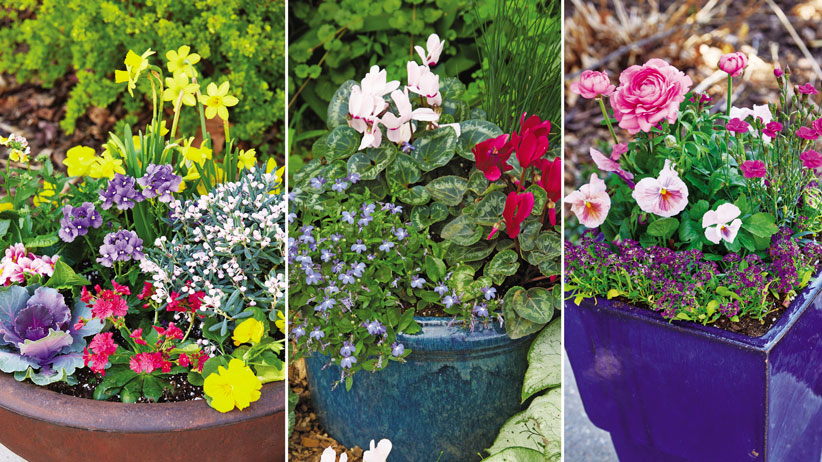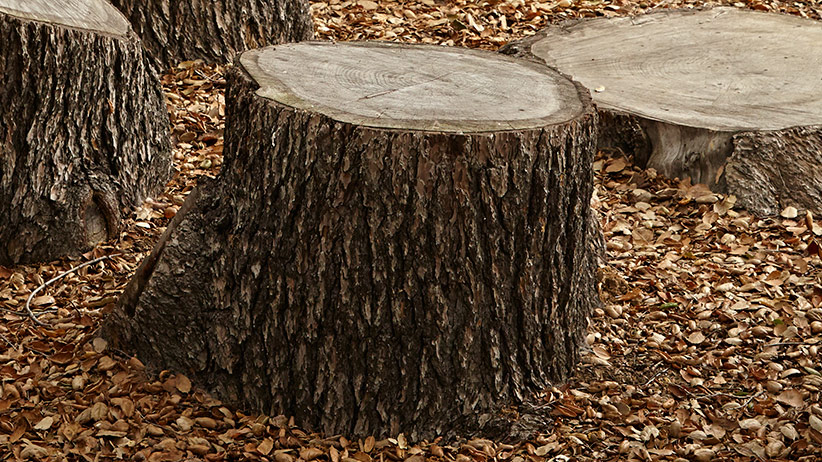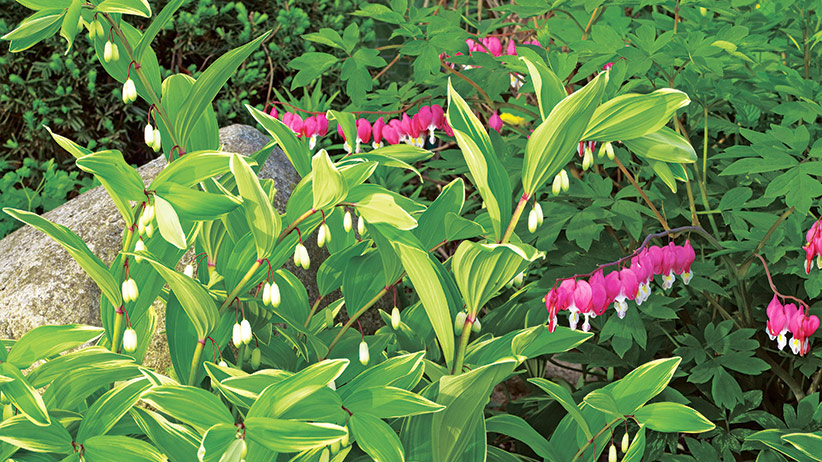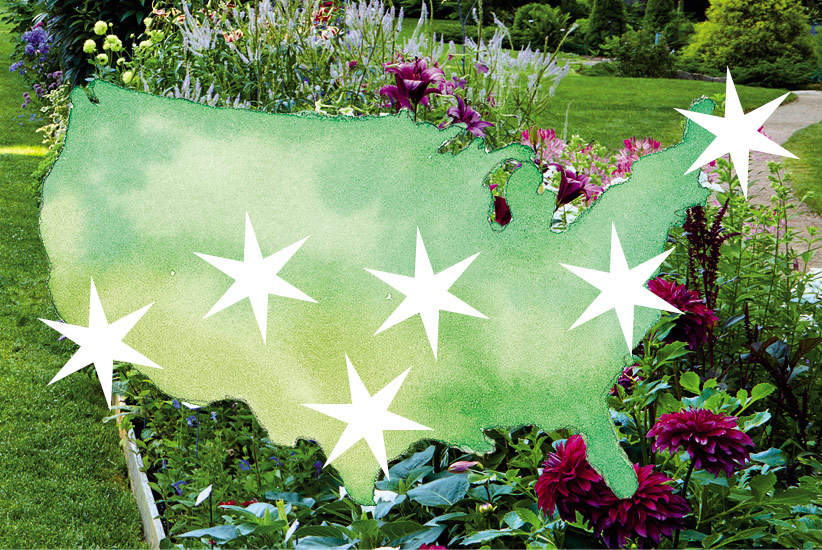
Visit a botanic garden
Public gardens are treasure troves of inspiration, beauty and knowledge. Whether you’re looking for new design ideas to freshen up your garden’s style or wondering which plants will grow best in your area, they’re definitely worth a visit. Let me introduce you to 7 botanic gardens with diverse plant collections and gorgeous display beds paired with classes, events and programs that reach a wide range of visitors from the most casual observer to plant geeks of all types. Let’s take a quick tour of each and I’m betting by the time we’re done, you’ll be making plans for a visit.
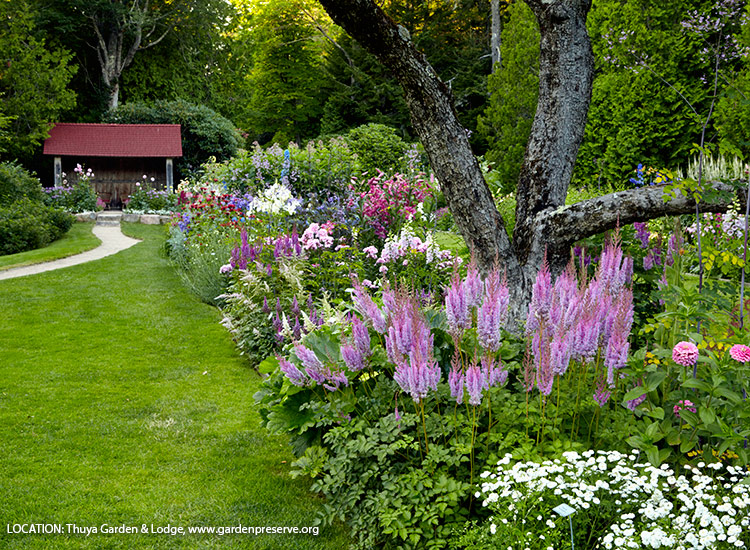
Thuya Garden
Northeast Harbor, Maine
Thuya Garden sits next to Acadia National Park and is packed with color every summer. The original property, an orchard, was donated by Joseph Curtis to the nearby town in 1928. Charles Savage then became the trustee of the property and added the Gertrude Jekyll-inspired flower borders you see in the photo above. The park opened to the public in 1962. The borders range from 30 to 130 feet long and peak in July and August with a mix of annuals and perennials.
In recent years property manager Rick LeDuc, and head gardener Wendy Dolliver, have worked with others to care for the gardens using organic methods. They've built the thin and rocky soil by adding seafood compost and composted manure. It now has a rich, loamy soil texture, perfect for growing perennials.
You Might Also Like:
Easy Flowers to Grow
Perennial Deadheading Guide
10 Long-Blooming Perennials
Keep flowers looking good
With all the flowers in these borders it's important to stay on top of deadheading which is a daily chore at Thuya Garden. Spent blooms are snipped out as soon as they start to fade so new stems keep coming.
And any long-stemmed flowers, such as lilies (Lilium spp. and hybrids), delphiniums (Delphinium hybrids) or dahlias (Dahlia spp. and hybrids), are staked using bamboo or wire stakes with a loop on the end keep them upright. Plants with bushier habits, such as garden phlox (Phlox paniculata), get a peony cage or bundle of brush propped at the base to keep the blooms up where they can be enjoyed.
Plan your visit
- Thuya Garden
- 15 Thuya Drive, Northeast Harbor, Maine
- Give yourself an hour or two to enjoy these beautiful borders.
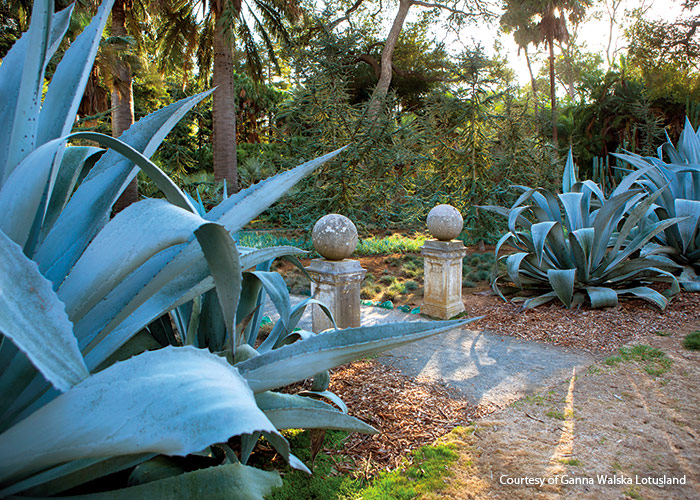
Ganna Walska Lotusland
Santa Barbara, California
Ganna Walska Lotusland® was the home of Madame Ganna Walska who purchased the 37-acre property in 1941. An opera singer and theater owner, she began focusing her creative talent on horticultural endeavors instead of just musical ones. Her love of the dramatic is evident in the scale and diversity of the gardens. Big plants and large collections beautifully display plants from all over the world for visitors to enjoy. Though Madame Walska passed away in 1984, the foundation she established carries on her vision.
A beautiful blue garden
Lotusland’s iconic garden above, The Blue Garden, was created in the 1950s. Its monochromatic theme was unusual at the time because the focus was on foliage, not flowers. Blue Atlas cedars (Cedrus atlantica ‘Glauca’), agave (Agave americana), blue fescue (Festuca glauca), blue chalksticks (Senecio serpens) and others give this area a cool, watery feel even on bright sunny days. Paths in the garden are lined with the blue glass slag. These chunks of irregularly shaped glass were left after a local water bottling company cleaned its kilns.
You Might Also Like:
Different Types of Ferns
Shade Garden Design Tips
Statement Plants for Your Garden
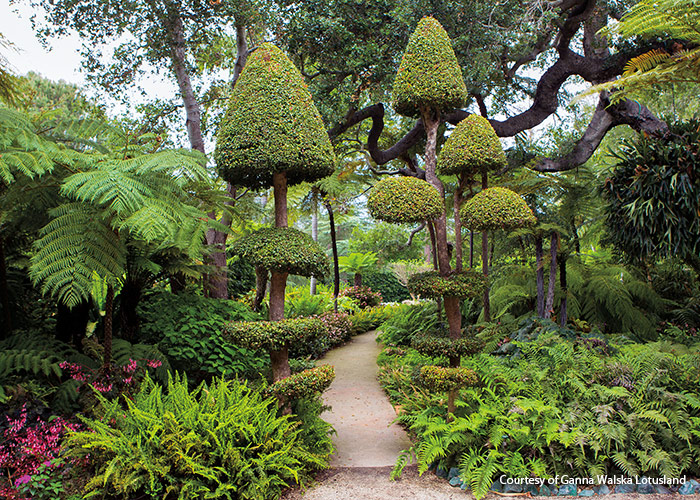
Discover the fern garden
If you want ideas for shade, visit the fern garden at Lotusland. This wooded part of the property has numerous live oaks, the perfect setting for a collection of Australian tree ferns and many other fern species along with their shade-tolerant companions. Even though the fern garden emphasizes texture there's plenty of seasonal color. Visit in spring and you can enjoy the clivia; summer color includes several species of hardy begonias in pink and white and the globe-shaped salmon and orange blooms of blood lily. In fall you can catch the angel’s trumpet in bloom.
Plan your visit
- Ganna Walska Lotusland
- 695 Ashley Road, Santa Barbara, CA
- 805-969-9990
- Allow 2 hours for one of their guided tours, which covers 1½ miles.
- Because of limited parking in this residential neighborhood, you need a reservation to visit Lotusland. You can call or make one online.
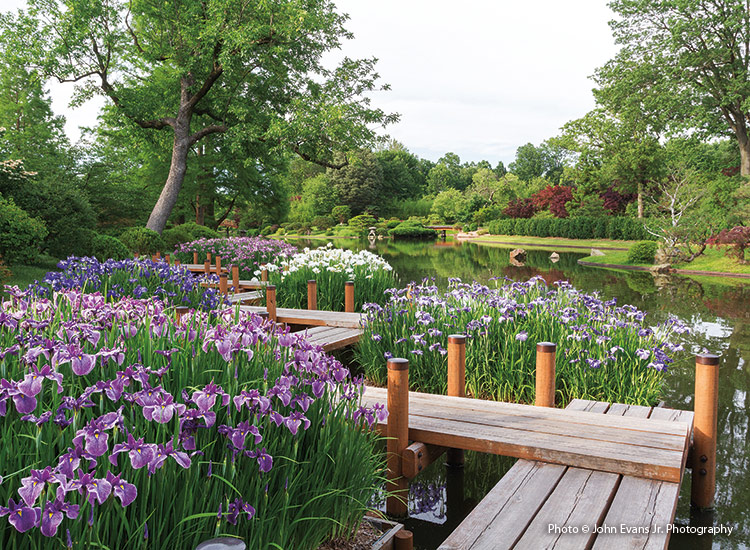
Missouri Botanical Garden
St. Louis, Missouri
The Missouri Botanical Garden is one of the oldest in the country, opening to the public in 1859. Businessman Henry Shaw built his country home in 1849 with the intention of adding gardens and later donating it to the public for education and enjoyment. You can visit the home, called Tower Grove, today in the Missouri Botanical Garden’s Victorian District. The garden now covers 79 acres, has thousands of plants spread through numerous gardens and plenty of activities, including festivals and classes. One popular area is the Kemper Center for Home Gardening. It has 23 residential-scale gardens on 8 acres. The information gleaned from growing plants here is shared, not only with visitors to the gardens, but with the wider public on the Plantfinder page of their Website.
Visit the Japanese garden
If you visit the Missouri Botanical Garden don't miss the Japanese Garden. It's name is Seiwa-en, which means “Garden of pure, clear harmony and peace,” and covers 14 acres, making it one of the biggest in North America. Careful to stay true to Japanese garden tradition, designer Dr. Koichi Kawana included a lake, traditional bridges, lanterns and stones, among other characteristics. Ben Chu, horticulture supervisor of the garden, recommends taking the path that meanders around the lake above to enjoy numerous vistas that were carefully crafted for discovery. You can bring a few design ideas from Seiwaen home without having to design a full-fledged Japanese garden. Check out Tips for a Beautiful Japanese Garden to learn more.
You Might Also Like:
6 Dependable Perennials for any Garden
DIY Privacy Screen
Designing with Japanese Maples
Plan your visit
- Missouri Botanical Garden
- 4344 Shaw Blvd., St. Louis, MO
- 314-577-510
- You could spend all day here or take just a couple of hours to wander through one part of the garden.
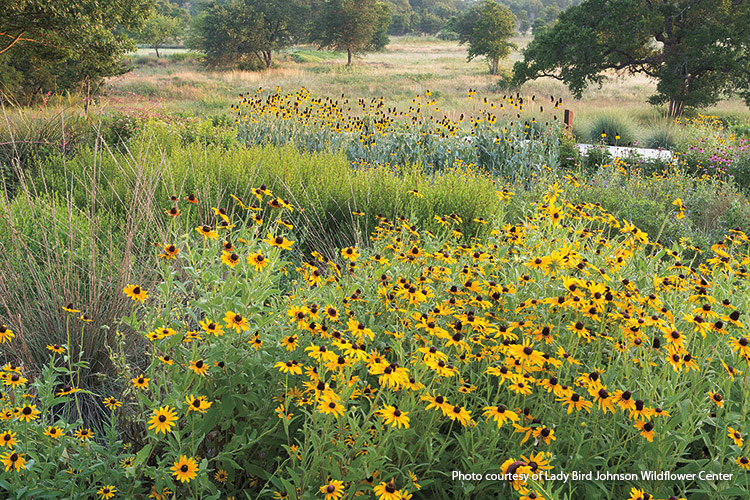
Lady Bird Johnson Wildflower Center
Austin, Texas
If you're charmed by wildflowers, put a visit to the Lady Bird Johnson Wildflower Center at the top of your list. Founded in 1982 by Lady Bird Johnson and Helen Hayes, the center promotes the conservation and use of native plants in natural and designed landscapes. While there is a strong focus on Southwestern natives, anyone can enjoy its beauty, and many of the plants featured grow well in other regions, too.
The Savanna Meadow Trail above is an ever-changing show of wildflowers. You'll see Texas bluebonnets (Lupinus texensis) in spring, turkscap (Malvaviscus arboreus var. drummondii) and black-eyed Susans (Rudbeckia spp.) above in early summer and hummingbird bush (Anisacanthus quadrifidus var. wrightii) toward fall.
While there's a children's garden, trial gardens and shady nooks to explore at the Lady Bird Johnson Wildflower Center, you won't want to miss the classic wildflower experience. Hike along the 1-mile wheelchair accessible Arboretum Trail where you can have some fun on one of the tree swings you’ll find there. Or take a shorter hike along the quarter-mile-long Savanna Meadow Trail above. This one winds through several meadows and crosses a small creek.
You Might Also Like:
Coneflower Growing Guide
The Best Goldenrods for Your Garden
Best Plants with Berries for Birds
Design tips for native plants
Native plants have a reputation for looking a bit too wild at times. That can certainly be the case with some species. If you want to grow native plants and avoid a messy look, Andrea DeLong-Amaya, director of horticulture, has these tips:
- Give each plant a little elbow room to highlight and provide room for the plant to develop its full, mature habit.
- Be sure to provide the maintenance your wild plants need, such as deadheading or pruning, to keep it tidy. At the Wildflower Center they’ve found that some native shrubs take shearing with ease. Yaupon holly (Ilex vomitoria) is a good example. They use it in a maze in the middle of the gardens and it looks just as nice as boxwoods (Buxus spp.and hybrids) but without the worry of boxwood blight.
- Love a native plant that has a rangy habit? No problem, just don't place it in prominent spot like the front yard. In addition, mask its irregular shape by growing denser plants nearby as camouflage.
Plan your visit
- Lady Bird Johnson Wildflower Center
- 4801 La Crosse Ave., Austin, TX
- 512-232-0100
- Allow 3 to 4 hours to take in all the sites
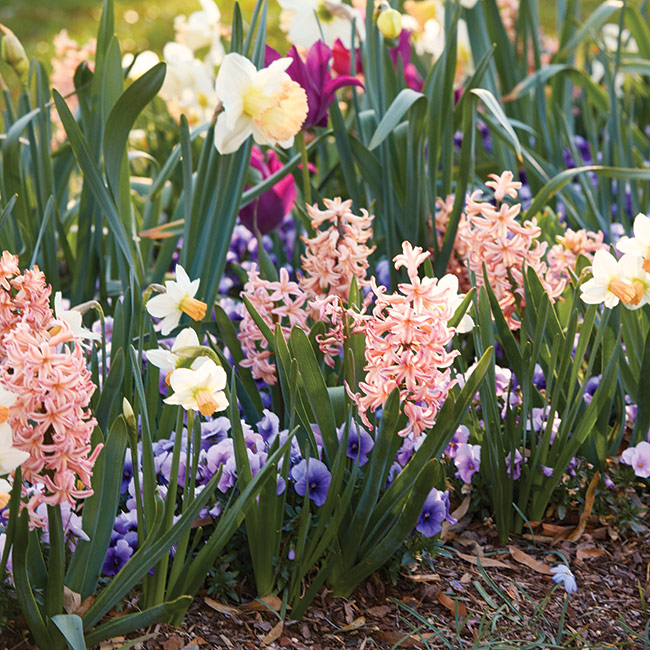
Lewis Ginter Botanical Garden
Richmond, VA
Spring is a great time to be at Lewis Ginter Botanical Garden. Founded in 1984 with a mission to connect people through plants, there are 82 acres to explore with something for everyone. Each year the staff plant thousands of spring-blooming bulbs in fall. A mix of flower shapes keeps borders interesting throughout spring. Tulips (Tulipa hybrids), daffodils (Narcissus spp. and hybrids), hyacinths (Hyacinthus orientalis) and pansies (Viola x wittrockiana) provide a beautiful and fragrant spring show. Flowering trees, such as cherry (Malus spp. and hybrids), are in full bloom then, too. Along with all the beautiful borders to inspire and educate, there are numerous programs that entertain visitors, mentor gardeners, and the staff even grow food for various community programs, such as Meals on Wheels.
Visit the Children's Garden
The Children’s Garden has really been growing in popularity in recent years. Kelly Riley, children’s education manager, is excited about all the ways she and her staff work to nurture and inspire kids with a love of nature and the outdoors. Wander the paths and you might find a sign posted in a bed of love-in-a-puff (Cardiospermum halicacabum) telling you to pluck a seed pod and see how it got its name (hint: the seed has a heart on it). Or you might find staff harvesting green beans and be able to pitch in with the harvest. Besides all the learning, there’s plenty of space for kids to have fun, too.
You Might Also Like:
How to Create a Child's Garden
Green Flowers for Your Garden
Flowers that will Attract Butterflies
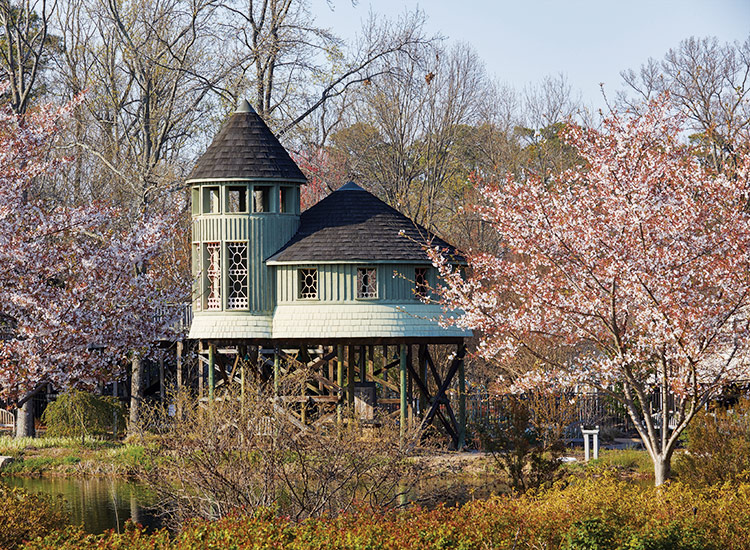
Climb to a tree house
You can't miss the Klaus Family Tree House above. It sits 13 feet off the ground and is visible from quite a distance. It isn’t in a tree, but is surrounded by them. Access the tree house by a gently sloping ramp — anyone from the youngest to the young at heart can enjoy the beautiful vistas through the windows. The trees around the house were chosen for their interesting leaf shapes — sweet gum (Liquidambar styraciflua) stars, ginkgo (Ginkgo biloba) fans and redbud (Cercis spp.) hearts. Like most of the plants in this area, they do double duty, providing beauty and lots of learning opportunities.
Plan your visit
- Lewis Ginter Botanical Garden
- 1800 Lakeside Ave., Richmond, VA 23228
- 804-262-9887
- Allow at least 2 to 3 hours for your visit
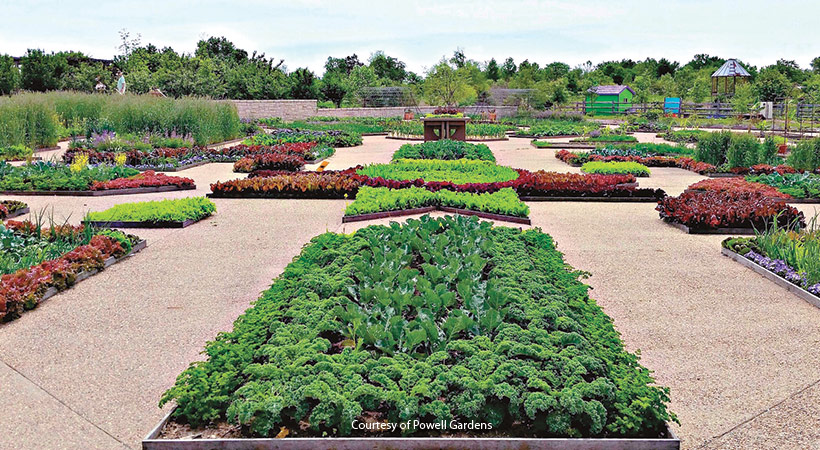
Powell Gardens
Kingsville, MO
Located in the heart of farmland 30 miles east of Kansas City, Missouri, Powell Gardens boasts 970 acres — 175 of those are cultivated and managed for the public to wander and explore. Tabitha Schmidt, CEO of Powell Gardens, explains that they embrace the Midwest spirit of place, and seasons are a big part of that so Powell Gardens celebrates them all with fun-filled festivals in spring, summer, fall and winter.
Learn about vegetable gardening
The Heartland Harvest garden is a family favorite that puts the focus on seed-to-plate education about the food we eat. There are lots of opportunities for kids and adults to plant, care for, harvest and sample edible plants of all types. This 12-acre exhibit includes a classic Missouri barn and 45-foot-tall silo that you can climb to take in the view of the gardens. There's also the Seed-to-Plant greenhouse where the staff start the seeds that are growing in the beds, a vineyard and the Villandry garden in the photo above, whose design was inspired by the Chateau de Villandry near Paris, France.
You Might Also Like:
How to Start a Vegetable Garden
Easy-to-Grow Heirloom Vegetables
Edible Flowers
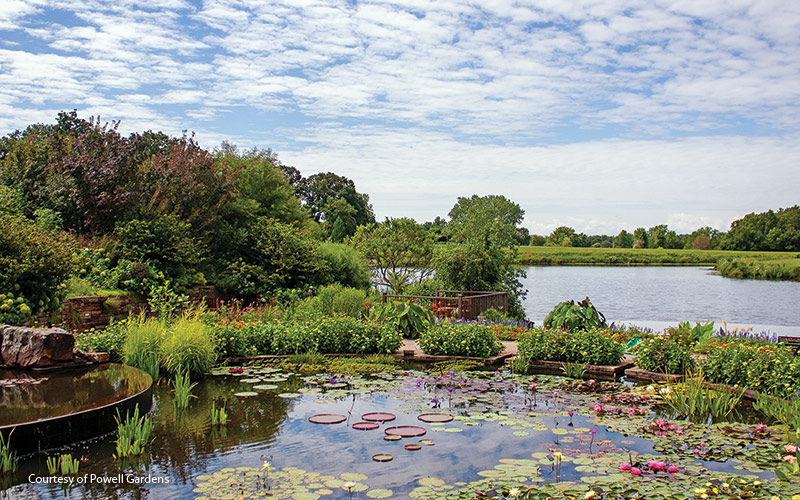
Visit an island oasis
One of the most popular exhibits is the Marlese Lowe Gourley Island Garden above. It’s a man-made island that connects two sides of a small lake. Take the path that meanders across it and you’ll find a sunken garden, a living wall and large tiered pools that feature water lilies (Nymphaea spp.and hybrids), lotus (Nelumbo spp.), cannas (Canna spp.and hybrids) and many other aquatic plants that are at their peak in summer. It just might inspire you to add a water feature to your own garden!
Plan your visit
- Powell Gardens
- 1609 NW US Hwy 50, Kingsville, MO 64061
- 816-697-2600
- Spend a couple of hours or all day — there’s plenty to see.
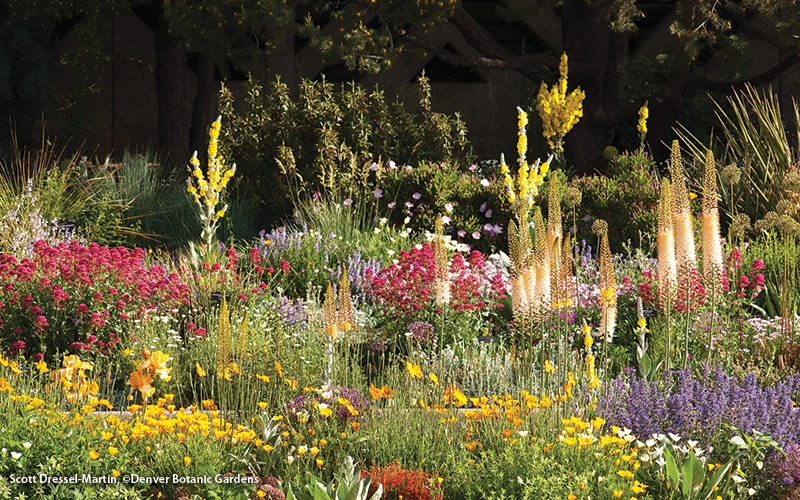
Denver Botanic Gardens
Denver, CO
If you’re looking for drought-tolerant garden ideas, there’s no better place to visit than Denver Botanic Gardens. With 24 acres in the heart of the city, there’s a lot going on — Panayoti Kelaidis, senior curator and director of outreach, calls the garden a tapestry of distinctive styles and themes. Besides all of the different low-water plantings, you’ll find classic perennial borders and annual bedding displays filled with flowers, a Japanese garden with many trained conifers and evergreens from the foothills of Colorado, a native prairie, a Victorian Secret Garden and much more.
Grow drought-tolerant beauty
One of the most popular borders at Denver Botanic Gardens is the gorgeous Roads Water Smart Garden above. It shows just how lush a low-water-usage garden can look (it’s only watered 3 to 4 times a year). The design is by Lauren Springer, landscape designer and author of The Undaunted Garden, and it’s been maintained and curated for more than 20 years by Dan Johnson, associate director of horticulture. The key to this border’s beauty is succession planting — bulbs, grasses and perennials of all shapes and sizes fill this space with color in their turn. Panayoti offers these tips for sleuthing out some drought-tolerant plants of your own at the garden center. Here's what to look for:
• Succulent stems or leaves, such as those found on sedums (Hylotelephium
spp. and hybrids) or euphorbia (Euphorbia spp.and hybrids), store water.
• Small leaves, whether they’re long and narrow or just plain tiny, conserve water by limiting transpiration.
• Silver or gray foliage usually indicates drought tolerance.
• Surface coatings that are hairy, such as silver sage (Salvia argentea), or waxy like wax begonias (Begonia semperflorens), help keep moisture from evaporating.
You Might Also Like:
Drought-Tolerant Plants
Long-blooming Salvias
A Delightfully Drought-tolerant Garden
Choose the right plants
Drought is a continual challenge in Colorado and many other parts of the country. That’s why Denver Botanic Gardens has worked hard on horticultural research projects and trialing plants of all types to see which ones are best for growing in dry conditions. Panayoti explained that some of those plants have become part of the Plant Select® program. It’s a collaboration between professional horticulturists, Denver Botanic Gardens and Colorado State University to find, breed and promote plants that grow well in the Rocky Mountain states. They’ve come up with a lot of great plants that are not only super drought-tolerant, but are versatile enough to be grown all over the United States.
Plan your visit
- Denver Botanic Gardens
- 1007 York St., Denver, CO 80206
- 720-865-3500
- Allow at least 2 or 3 hours to see many of the exhibits or spend all day exploring.








